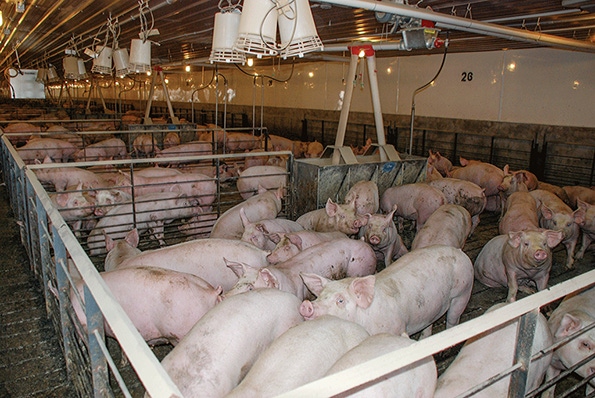Cost of feed per pound of gain is a finishing production metric that does not get much publicity or attention.
April 23, 2019

By Will Fombelle, DVM, Carthage Veterinary Service Ltd.
Oftentimes while summarizing a wean-to-finish closeout report, most producers will center their attention around metrics such as percent Grade A pigs, average daily gain and feed conversion rate. These metrics are very important to a producer’s bottom line; however a finishing production metric that does not get much publicity or attention is the “cost of feed per pound of gain.”
When we compare “feed conversion rate” and “cost of feed per pound of gain,” there is a bit of difference between the two. Most important is the cost of the diet. There are several instances in which a producer who yields the most superior feed conversion rate is losing opportunity against a producer who has a bit higher feed conversion rate but feeds a much lower cost ration.
There is a multitude of variables that play a part in each producer’s individual diet cost such as:
Does the producer grow pigs in an area with low-cost corn and soybean meal?
Does the producer grow their own corn?
Does the producer make their own feed?
Does the producer feed ingredients such as ractopamine?
When we look at this list of variables, the main influence for a majority of producers is the distance from available key inputs such as corn, soybean meal and dried distillers grains with solubles and the costs of these three inputs. Each producer is different in how they feed pigs, however availability and price of the bulk ingredients play a very influential part in feeding a diet that is well balanced and cost-effective.
As we look across the U.S. pig production system, it is understood that pigs that are fed in the center of corn and soybean production will be the most likely to feed a cheaper diet while being able to feed traditional ingredients such as corn, soybean meal and DDGS. As we move further into the Eastern Corn Belt and East Coast regions, producers will look to other sources of ingredients to help balance their diet while keeping competitive performance metrics. Producers who are able to work closely with a nutritionist have a greater advantage to be able to adjust their diets and push pigs toward the maximum performance while achieving maximum growth and production performance.
In addition to overall diet cost, factors that can help decrease this metric are similar to factors that lower feed conversion rate.
Pig health — Late finishing mortality plays a large role in both of these metrics. If we have a surge of late finishing mortality, the “dead weight” of these mortalities will raise both of these metrics.
Feeder settings/feed wastage — According to the 2014 PIC Wean-Finish manual, optimum feeder pan coverage during the first seven days of the “nursery” period is 50% pan coverage followed by 20% to 40% pan coverage for the remainder of the finishing production period1. Feeders that are set with too much pan coverage will lead to more feed waste which will eventually lead to a higher feed quantity for the group.
Diet formulation and feed budget — As I mentioned above, working with a Nutritionist to formulate a lower cost/high performing diet is one of the most important ways to influence performance. However, following the suggested feed budget and delivering the “right feed at the right time” is essential to a pig’s feed conversion and overall performance.
References
12014 PIC Wean to Finish Manual
Source: Will Fombelle, which is solely responsible for the information provided, and wholly owns the information. Informa Business Media and all its subsidiaries are not responsible for any of the content contained in this information asset.
You May Also Like



